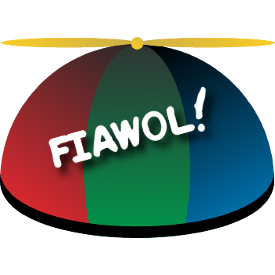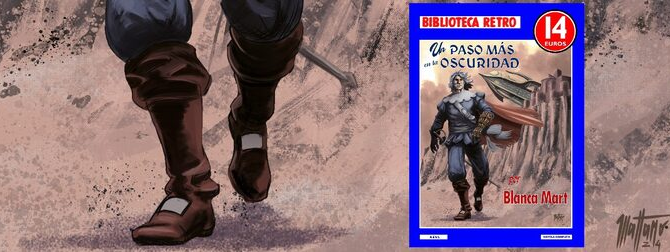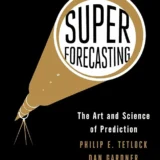Today Amazing Stories begins a new regular feature. Actually a feature within a feature, because today also marks the website’s inauguration of Fannish Fridays, which is itself a new feature.
Fannish Fridays offers our readers a concentration of content that is squarely focused on fandom. Or, I should say FANDOM. Those people for whom terms like SMoF, Dirty Old Pro, Femmefan, Fen, GAFIA, FIAWOL, FIJAGH, BNA & BNF, not to mention Roscoe, Ghu,Yngve and Smooooth!, DUFF & TAFF are not unfamiliar fanspeak.* (If they are unfamiliair, you’re not in the wrong place. You’re in the RIGHT place to learn all about it!)
 And what, I ask, can possibly be more Fannish than a Fanzine? Oh, I’m sure con-running comes close and the Filkers would probably raise their hands but I believe that the historical truth is that the first expressions of Fanac (boy, you sure are spending a lot of time on that Stilyagi Fanspeak Dictionary, aren’t you?) was letter writing, followed almost immediately by the very first Fanzine, the Comet, edited by Raymond A. Palmer (who would go on to edit Amazing Stories in the late 30s to 40s – we don’t talk too much about him here because he went a little wonky what with Shaver’s subterranean rock painters and later UFOs) and Walter Dennis, published in 1940.
And what, I ask, can possibly be more Fannish than a Fanzine? Oh, I’m sure con-running comes close and the Filkers would probably raise their hands but I believe that the historical truth is that the first expressions of Fanac (boy, you sure are spending a lot of time on that Stilyagi Fanspeak Dictionary, aren’t you?) was letter writing, followed almost immediately by the very first Fanzine, the Comet, edited by Raymond A. Palmer (who would go on to edit Amazing Stories in the late 30s to 40s – we don’t talk too much about him here because he went a little wonky what with Shaver’s subterranean rock painters and later UFOs) and Walter Dennis, published in 1940.
Uncle Hugo started publishing full addresses for fans in Amazing’s letters column in 1927 and if ever there was a case that disproved the Einsteinian speed limit, the first letter penned by a fan to another fan is probably it.
Now kids, get ready for a shock. Back in those days, there were no Xerox machines, no offset printing available to consumers; heck, most people didn’t even have telephones (which is probably why that letter column only had addresses – without Zip Codes!). Publishing an amateur magazine wasn’t something you could just pop off and do if you had the coin. The means of production just did not exist.
But fans are and always have been a resourceful lot. So some of them sat down at their typewriters (kinda like your keyboards but large, noisy, mechanical, analog and SOOOO much more visceral) and they cranked multiple sheets of paper separated by Carbon Paper (the origin of that “CC” you see in your emails) onto their platen and jammed down real hard on each and every key to make a strong impression right through those multiple sheets of paper, thus creating multiple (mostly readable) copies for distribution. Later they’d engage with the Hectograph, the Ditto machine and the Mimeograph and still later the Xerox, offset printing and electronic printing and started arguing about what is and is not a fanzine (reprising the earlier argument regarding Sercon vs Genzine) and arguing about what should and shouldn’t be eligible for a Hugo Award (they give them out for Best Fanzine, Best Fan Writer and Best Fan Artist – and now they’re arguing about those!).
Put ten fans in a room, ask them a question and you’ll get twenty opinions (at least). Or a very breezy room.
Amazing Stories got a good bang for its buck by helping to kick start Fandom and the lesson wasn’t lost on succeeding generations of editors and publishers. The letter column continued to be a fannish resource and from time to time the magazine would run regular features about Fandom, conventions and fanzines.
This habit arguably reached its apotheosis with Susan Wood’s The Club House feature in Amazing Stories in the 70s (my favorite feature and my entre to fanzines), a feature reproduced here by Leah Zeldes in conscious homage for a brief while some months ago.
Fannish Fridays is our return to that effort to highlight the world of Fandom. And we’re not above taking advantage of all the nifty tech that’s come into being over the past. Unlike previous incarnations of Fan columns in prozines, we can bring you the fanzine instead of just talking about it. Which we have.
Our first offering is a fitting one as its author/editor and publisher – John Purcell – is the HFiC of the Fanzine Lounge at this year’s Worldcon, LoneStarCon 3. He’ll be displaying information about fanzine history, organizing a special edition APA and giving away a bunch of fanzines.
We asked John (who regularly contributes to Amazing, read his profile here) “Why a fanzine?”, and this is what he had to say:
(O)bviously I don’t do it for the money. 😀 My reasons are very simple: it’s a fun way to stay in touch with my fannish friends, and I enjoy writing a lot. It’s a good feeling to see an issue come together, getting responses (locs) from folks, and when an issue is all done, I am always proud of my new bouncing baby fanzine. There is definitely a sense of accomplishment with fanzines, but mostly it’s done for my friends. Can’t say it better than that.
Forthwith – Askance: 28. Reprinted here with the permission of John Purcell and (and…and…and) the fine folks at eFanzines.com, where you are sure to find many, many, many people committing fanzine all over the place! (If you would prefer to read Askance in its native habitat, go here.)
Steve Davidson is the publisher of Amazing Stories.
Steve has been a passionate fan of science fiction since the mid-60s, before he even knew what it was called.









